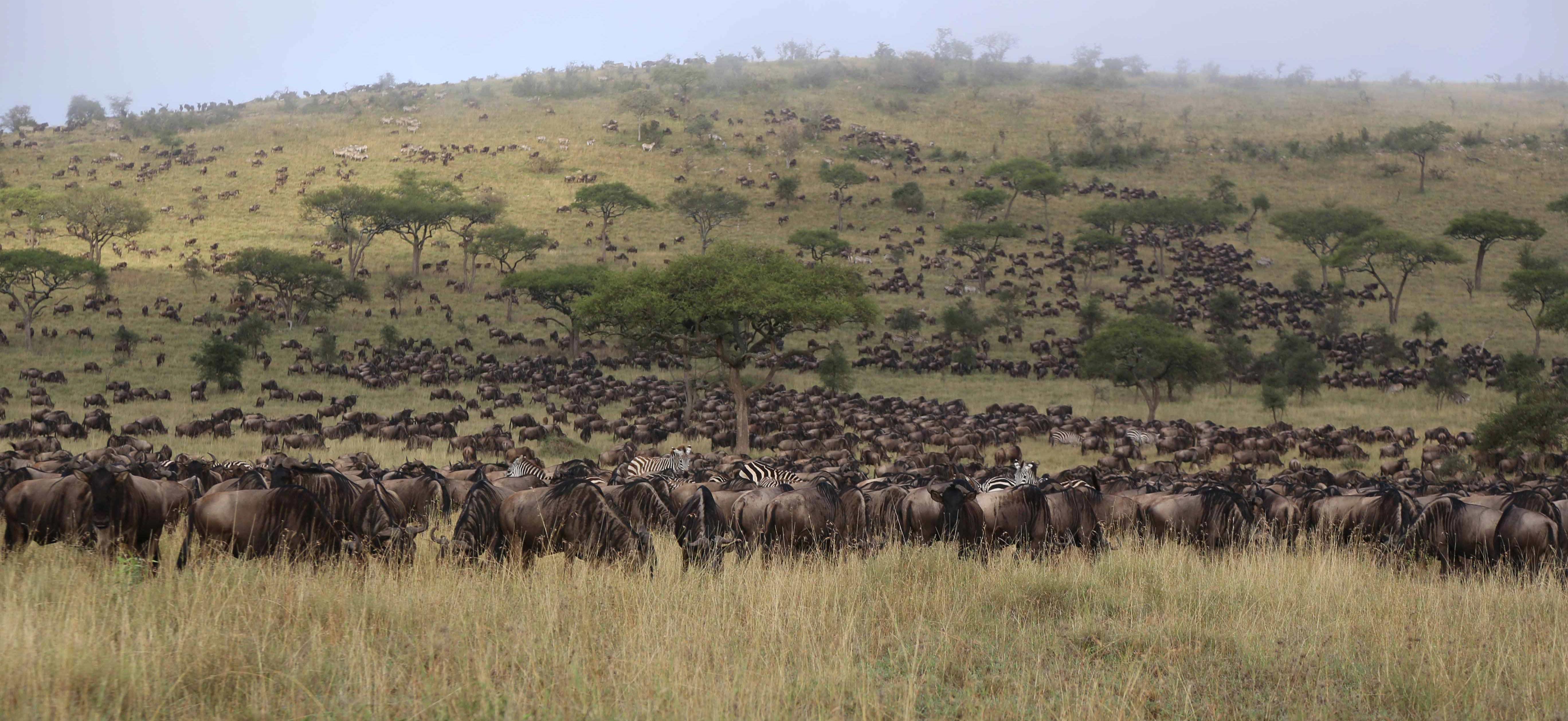Disentangling transport and trophic effects of animal movement on infectious disease
Published: 26 January 2021
This project examines the impacts of migratory wildebeest on the parasite abundance in the environment and in four wildlife species in the Greater Serengeti Ecosystem: topi, hartebeest, African Cape buffalo, and Grant's gazelle. The project also explores the broader impacts of wildebeest on parasites in livestock populations.

Mobile organisms, such as many species of birds, insects and ungulates, have long fascinated scientists and the general public because of the vast distances over which these animals travel and the large impacts they have on the dynamics of ecosystems they encounter. The high local densities and long-distance movements of mobile organisms provide seemingly ideal conditions for the emergence and spread of disease-causing pathogens, yet the ways in which mobile hosts modify the infection dynamics of less-mobile (i.e. resident) hosts is poorly understood.
This project explores these dynamics in one of the most intact and largest terrestrial animal migration systems in the world - the Serengeti wildebeest - to advance understanding of the impact of animal movement on parasite dynamics.
The team is exploring two main hypotheses about how migratory animals may impact parasite infection in resident species:
- That mobile hosts can shed parasites in locations visited by other hosts, thereby creating areas of high parasite density.
- That mobile hosts can profoundly change the environment in which parasites mature, for example by shortening the height of vegetation both through trampling and foraging, which can directly and indirectly modify the risk of parasite transmission to resident hosts.
On top of these two possibilities are layered many different mechanisms that may modify infection risk:
- mobile herbivores may promote or reduce parasite exposure risk by either i) concentrating parasites on the remaining vegetation, or ii) removing parasites through consumption.
- mobile hosts may alter the behaviour of other herbivores indirectly through their effects on vegetation, by iii) promoting regrowth of vegetation and thus attracting herbivores, or iv) consuming all of the food and thus displacing them.
To untangle this complicated set of potential relationships, the team will explore the impacts of highly mobile wildebeest on the parasite abundance in the environment and in four wildlife species: topi, hartebeest, African Cape buffalo, and Grant's gazelle. In wildlife species, the project will examine these different mechanisms using a combination of tracking data (GPS collars, camera traps, spatial distribution models) and molecular analyses of parasite infection dynamics in animals. This work will be combined with experiments that manipulate two of the main vegetative mechanisms that alter parasite availability in the environment: density of feces and grazing intensity on grasses.
The team will use all of the collected data to develop a general model of infection dynamics in mobile and resident hosts that will allow insight into the conditions in which infections are most likely to increase or decrease. These dynamics are likely to also apply to livestock, however in many systems around the world there is a lack of understanding of whether wildlife and livestock even share the same parasites. Thus, a broader impact of the project is to examine the extent to which mobile wildlife change the infection intensity in resident livestock, whether the two groups share the same populations of parasites and whether mobile wildlife benefit livestock by acting as a refugia for parasites that are sensitive to anti-parasite drug treatment (i.e. a natural buffer to anthelmintic resistance).
By exploring this complex web of interconnected infection and risk factors, the team will open the door for a range of exciting future research questions in disease ecology, animal health and wildlife-livestock interactions, as well as training opportunities with local animal health students and authorities.
First published: 26 January 2021
UofG - School of Biodiversity, One Health & Veterinary Medicine

